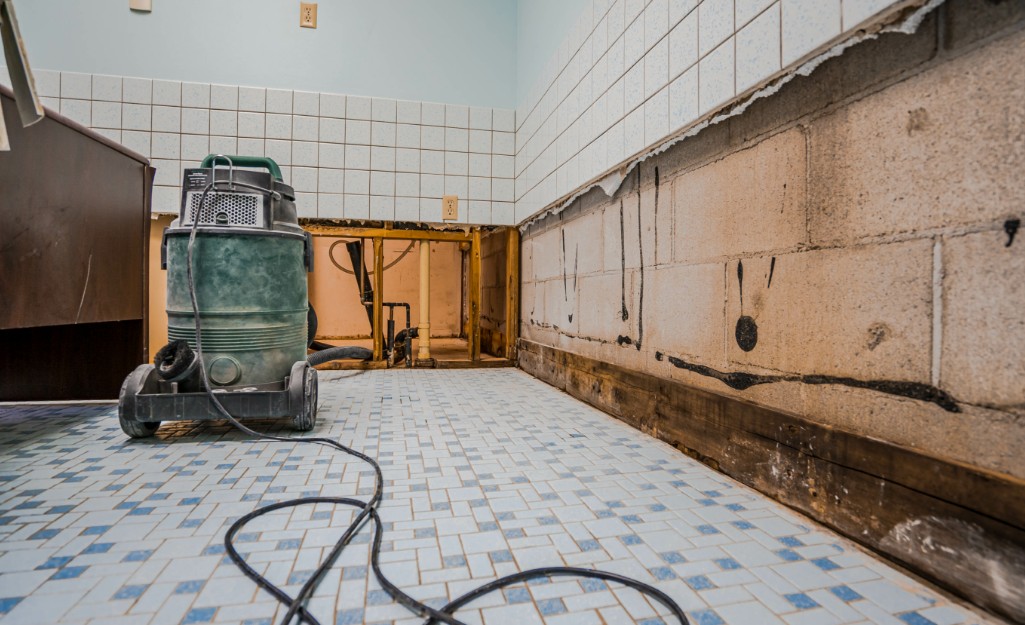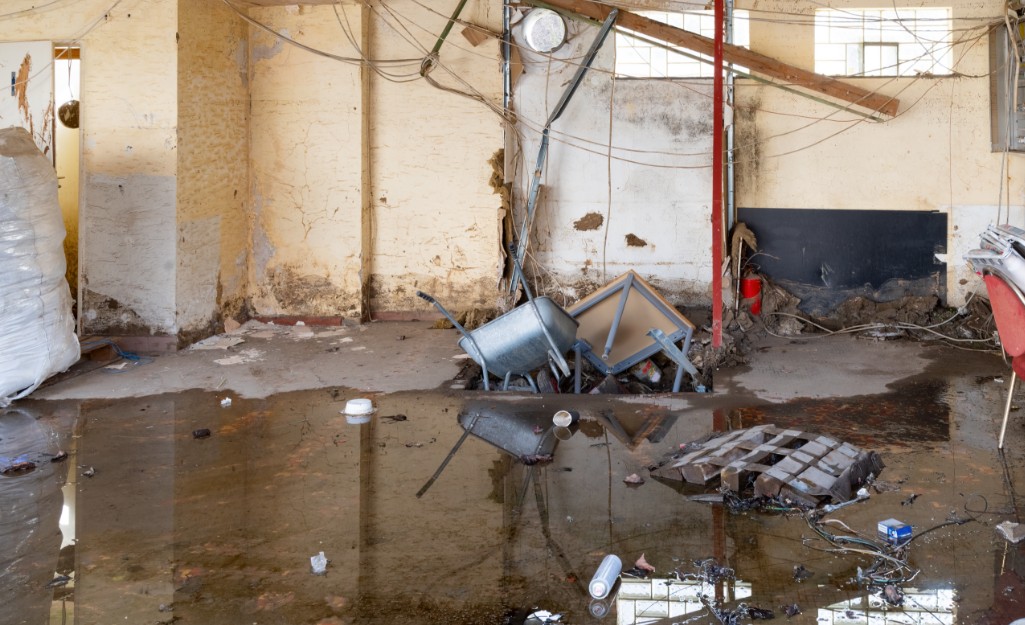The essential homeowner’s reference for Water Damage Restoration
Top Tips for Effective Water Damage Restoration: Protect Your Property Today
Water damage can strike suddenly, triggering considerable disruption and potential risks. Efficient restoration needs a systematic strategy to minimize more damage. From reviewing the damage to carrying out preventative procedures, each action plays an important duty in guarding residential property. Understanding these methods can make all the difference in the aftermath of a water-related dilemma. What essential actions should be prioritized to guarantee thorough protection?
Analyze the Damage Promptly
When a water damage event takes place, it is important to assess the damage quickly to reduce additional issues. This preliminary analysis helps determine the degree of the damage and recognizes influenced locations. Water can leak into walls, floorings, and furnishings, causing mold and mildew growth and structural instability if not resolved quickly. A thorough assessment needs to consist of looking for staining, wetness, and moldy smells, which indicate wetness presence. It is also crucial to record the damage with photos and notes for insurance coverage functions. Engaging specialists for an extra detailed analysis may be needed, especially when handling substantial or covert damage. Water Damage Restoration. Early acknowledgment and exact assessment lay the structure for efficient restoration and safeguard the building from added issues
Shut down the Water Supply
Turning off the supply of water is a necessary action in preventing additional damage throughout a water-related occurrence. When a leak or flooding happens, prompt activity is important to minimize the extent of the damage. Finding the primary water shut-off valve must be a priority. This shutoff is usually situated near the water meter or where the water line gets in the property. When situated, turning the valve clockwise will stop the flow of water. In instances where the major valve is inaccessible, specific shut-off shutoffs for devices may likewise be made use of. Without delay shutting down the water system not only shields the building from added harm yet likewise helps with the subsequent restoration process, making sure that recuperation efforts can start right away.
Get Rid Of Excess Water Quickly

Eliminating excess water promptly is important for decreasing damage and protecting against mold and mildew growth in influenced locations. The longer water continues to be touching products such as wood, drywall, and insulation, the greater the danger of structural damage and the growth of mold and mildew. Mold Remediation After Water Damage. Homeowners need to act quickly to evaluate the circumstance and use suitable devices, such as damp vacuums or pumps, to draw out standing water effectively. If the quantity of water is considerable, calling professional restoration services may be needed, as they can offer specialized equipment and knowledge. Additionally, eliminating furniture and possessions from the affected location can assist to decrease damage and help with the general restoration procedure. Prompt action not only protects property but also help in a smoother recovery trip
Dry the Affected Location
After removing excess water, it is important to dry out the affected location extensively. This involves removing any standing water and enhancing air flow to assist in evaporation. Efficient drying will assist stop mold development and more damage.

Remove Standing Water
Swiftly addressing standing water is essential for effective water damage restoration. The visibility of stationary water can bring about additional property damage and develop a setting helpful to mold and mildew growth. To reduce these risks, it is necessary to get rid of standing water as promptly as possible. This procedure generally entails using submersible pumps, wet vacuum cleaners, or specialized extraction devices. Experts advise examining the deepness and level of the water prior to selecting the appropriate approach for removal. Safety and security precautions should likewise be taken, including putting on protective equipment and making certain power is transformed off in affected areas. Once the standing water is successfully eliminated, the drying process can start, even more guarding the property from recurring damage.
Boost Air Blood Circulation
Increasing air blood circulation is important for successfully drying out areas impacted by water damage. This procedure aids to accelerate evaporation, minimizing the threat of mold and mold development. Specialists often suggest making use of fans to produce a constant airflow throughout the room. Placing box fans in home windows can attract fresh air, while high-velocity followers can route airflow towards damp surface areas. Water Damage Restoration. In addition, opening up home windows and doors enables cross-ventilation, enhancing the drying procedure. Dehumidifiers can likewise be used to remove excess moisture from the air, further aiding in drying out. By ensuring that air circulates freely, homeowner can greatly lessen the lasting impacts of water damage and protect the stability of their structure
Check for Mold Development
Mold development is a major issue complying with water damage, as it can lead to health issues and architectural deterioration. After any flooding or leakages, it is important to perform a thorough inspection of the influenced areas. This consists of monitoring covert spaces such as behind wall surfaces, under rugs, and in cellars or attic rooms where dampness may remain. Signs of mold and mildew consist of a stuffy odor, staining on surfaces, or noticeable development. Homeowner need to utilize protective equipment when examining, as mold and mildew spores can posture health risks. If mold and mildew is discovered, it is vital to address it promptly, as postponing removal can worsen the problem and increase the danger of serious health and wellness problems for occupants. Early intervention is vital to effective mold administration.

Repair Service and Restore Damaged Frameworks
When attending to water damage, it is essential to very first examine the structural stability of the influenced locations. This examination aids determine possible risks and notifies the necessary fixing approaches. Engaging expert restoration services ensures that the restoration procedure is conducted safely and properly.
Evaluate Structural Honesty First
Prior to starting any kind of water damage restoration, it is vital to analyze the architectural stability of the damaged area. This examination assists recognize any kind of jeopardized components, such as wall surfaces, foundations, or beam of lights, which might posture safety threats - Water Damage Restoration. Evaluating for signs of bending, cracking, or mold and mildew growth is essential, as these signs can expose underlying damage that needs immediate focus. Additionally, understanding the degree of the damage can lead restoration efforts and figure out whether repair services are possible or if substitute is essential. It is crucial to document findings completely, as this information can be valuable for insurance cases or future recommendation. Prioritizing structural assessment guarantees that restoration efforts proceed safely and efficiently, inevitably safeguarding the property and its passengers
Use Expert Restoration Services
Making use of specialist restoration services is essential for properly fixing and recovering damaged structures after water cases. These specialists possess the necessary training, devices, and experience to mitigate and website examine water damage thoroughly. They can recognize covert concerns, such as mold and mildew growth and structural weak points, that may not be right away evident. Professional solutions additionally utilize advanced drying out techniques and devices, making certain that all dampness is removed to stop additional damage. In addition, they abide by sector requirements and policies, making sure that the restoration procedure is safe and effective. By involving restoration professionals, building proprietors can quicken recuperation, decrease long-term damage, and ultimately protect their financial investment. This aggressive technique is essential in keeping the integrity and security of damaged frameworks.
Avoid Future Water Damage
To efficiently stop future water damage, house owners need to take on a positive approach to maintenance and repair work. Regular assessment of roofs, seamless gutters, and downspouts is vital; clogged rain gutters can bring about water overflow and roof leakages. Additionally, looking for leaks in pipes fixtures and home appliances can obstruct prospective damage. Property owners need to likewise take into consideration installing sump pumps in basements or low-lying locations to take care of water accumulation. Securing splits in structures and making sure correct water drainage around the residential or commercial property are vital actions in safeguarding against water intrusion. Preserving humidity levels with dehumidifiers can prevent mold and mildew growth. By executing these safety nets, homeowners can substantially decrease the risk of water damage and secure their building for the long-term.
When a water damage event occurs, it is necessary to analyze the damage promptly to reduce additional issues (Mold Remediation After Water Damage). Removing excess water without delay is vital for lessening damage and avoiding mold development in impacted locations. Promptly dealing with standing water is important for effective water damage restoration. The presence of stagnant water can lead to further building damage and develop an environment conducive to mold and mildew development. Before launching any water damage restoration, it is important to assess the architectural integrity of the damaged area